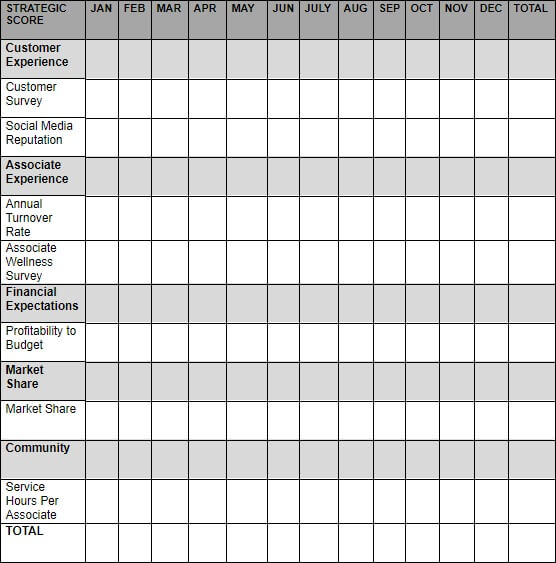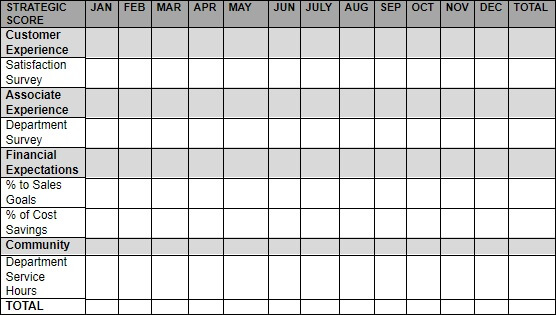Today, I want to talk employee engagement, what it really looks like, and why a scorecard is such an important part of the engagement process. Employee engagement has received considerable attention in the past few years, particularly because research shows that engagement leads to increased performance, retention, and customer satisfaction. Unfortunately, only 51 percent of U.S. employees are engaged at work. There is a major need to make a change, but understanding what engagement is and how to achieve it isn’t always clear.
Let’s start by understanding what engagement is. Engagement is defined as “being present at a particular time and place.” In today’s highly connected, fast-paced world, our staff can easily become distracted or disengaged at work. This requires managers to take a proactive approach to helping staff be present at work. To do so, employees must be actively involved in understanding and working on the business—not just in it.
Unfortunately, most managers, executives, and owners seem determined to keep their employees on the outside looking in. They neglect to realize that there cannot be engagement without involvement from your employees. “Good leaders make people feel that they’re at the heart of things, not at the periphery,” organizational consultant Warren Bennis writes. “Everyone in the organization feels that he or she can make a difference to the success of the organization. When that happens, people feel centered, and that gives their work meaning.”
Involve employees by defining and communicating your company’s objectives so everyone knows they should be working towards. Align individual and departmental goals with the company’s objectives so everyone’s efforts are going in the right direction. Next, ensure each of the objectives has measurements or scores that can be reviewed regularly.
Company Scorecard
Once company objectives and measurements have been defined, managers must share those scores and give feedback. One of the best ways to do so is by creating a company scorecard that is easy to read and easy to understand. Here’s an example:

Department Scorecard
Once your company scorecard is set, you can then drill down into a department scorecard that is more relevant to your immediate staff. Here’s an example:

Individual Scorecard
You can use this format to create an individual scorecard for every employee to highlight key objectives related to the department and company goals. An individual scorecard is a great tool for individual accountability.
Update and review the scorecards each month. Ensure the scorecard is posted in an easy-to-access place, available both in soft and hard format.
Share the Scores
Technology is making it easier to create strategies, share results, and keep everyone aligned and working toward a shared vision. There are several technology companies such as Cascade, Envisio, and OnStrategy that provide software that aligns the elements of individual and company goals and the supporting action and achievement plans across a company. Whatever method you choose, it’s important to share scores with all employees.
When employees know the scores, they’re aware of overall company performance and can have focused conversations and communication about achievements, concerns and required improvements. Remember to share the results, no matter if they’re good, bad, or ugly. This is a critical step in creating a culture of accountability.
Individuals and departments must know how they personally and collectively affect the company scorecard. They must know how to make the adjustments needed to reach objectives. Some departments will have more impact to drive revenues, help customers, or manage expenses. Once everyone understands their purpose and contribution, managers can then engage their people to improve company scores, which is where I believe true engagement occurs.
Make sure your employees know your objectives, understand scores, and are working on a plan to improve. This is what engagement really is: employees being present, understanding how their efforts make a difference, and knowing their purpose in your company.
Thanks for reading. Don’t forget to check out my book, Culture Hacker, available on Amazon and Barnes & Noble. Also check out Season 2 of the Culture Hacker Podcast, available on SoundCloud and iTunes.
Post Views: 2,052